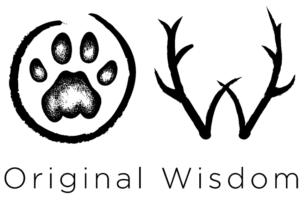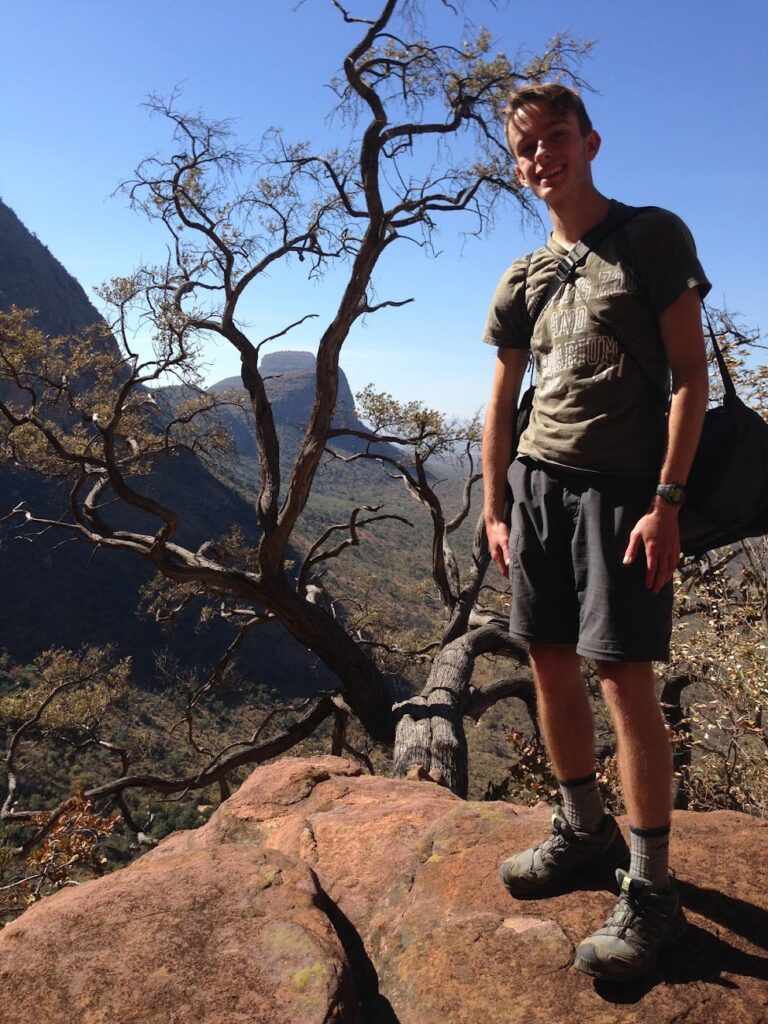Cape Cod! A small adventure to the sandy seashore in preparation for Africa.
This is the first in a short series of blogs written by students preparing for an experiential adventure program to South Africa with Original Wisdom and Nature Guide Training. They arrive on July 1st, and will be with us until July 21st – almost 3 full weeks in the African bush, learning about the ecology here through tracking and collecting data for mapping through ArcGIS online. More than that, we have invited a local girl, Mhlavasi, to be on the program with us, on a full scholarship. Mhlavasi and the Hopkinton and Bow students will also travel to her rural school, Acorns to Oaks, and teach some of her classmates about thinking spatially, and how useful mapping can be – not just in ecology and tracking, but also in health, safety, and many other areas of life. We can’t wait! is it the 1st, yet? – Kersey
Michelle Neal
Cape Cod: Day 1
May 17, 2015
We departed from Hopkinton High School at 9 am — right on time. A total of 15 students and instructors from two New Hampshire high schools, Hopkinton and Bow, along with three days worth of clothes, tents, and equipment. Everything fit snuggly into a small school bus and a Jeep. The two and a half hour venture down to Cape Cod consisted of naps, learning about one another, and of course, a stop at McDonald’s.
 This two day trip was a prelude to a much longer, adventure-education program that we would be embarking upon together: African Ecology and Culture. We had been fundraising for a year to raise the money that would bring us all over the ocean for three weeks together in a private research camp in one of the biggest open ecosystems of the world, the Greater Kruger Area of South Africa, amidst a colorful mixture of South African people: naturalized citizens of European and Indian descent, and the Shangaan people who had split off of King Shaka’s great Zulu tribe after a dispute over cattle, following their own leader, King ShoShangane, and moving into what had originally been San (Bushmen) lands more than 200 years prior – the San long ago pushed north into the Drakenberg Mountains and then into the Kalahari Desert by the Tsonga, Ndebele, and Swazi.
This two day trip was a prelude to a much longer, adventure-education program that we would be embarking upon together: African Ecology and Culture. We had been fundraising for a year to raise the money that would bring us all over the ocean for three weeks together in a private research camp in one of the biggest open ecosystems of the world, the Greater Kruger Area of South Africa, amidst a colorful mixture of South African people: naturalized citizens of European and Indian descent, and the Shangaan people who had split off of King Shaka’s great Zulu tribe after a dispute over cattle, following their own leader, King ShoShangane, and moving into what had originally been San (Bushmen) lands more than 200 years prior – the San long ago pushed north into the Drakenberg Mountains and then into the Kalahari Desert by the Tsonga, Ndebele, and Swazi.
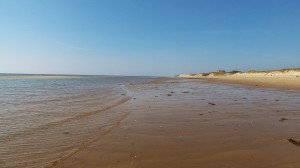 As soon as we arrived, the tents were unloaded and set up (some proved to be more difficult than others). Once everyone was settled in, our instructor from Hopkinton, Mr. Semmens, herded us back onto the bus. It was our first adventure to the Great Island Beach! It welcomed us with a clear-blue-sky and powerful sunlight.
As soon as we arrived, the tents were unloaded and set up (some proved to be more difficult than others). Once everyone was settled in, our instructor from Hopkinton, Mr. Semmens, herded us back onto the bus. It was our first adventure to the Great Island Beach! It welcomed us with a clear-blue-sky and powerful sunlight.
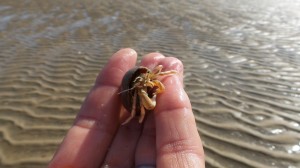 A short walk through the woods brought us to what we called Fiddler Crab City. Thousands of holes in the soil sheltered the crabs. If we were silent, we could hear the crackling of their shells at work. They were everywhere. It was a whole community of colorful, busy creatures.
A short walk through the woods brought us to what we called Fiddler Crab City. Thousands of holes in the soil sheltered the crabs. If we were silent, we could hear the crackling of their shells at work. They were everywhere. It was a whole community of colorful, busy creatures.
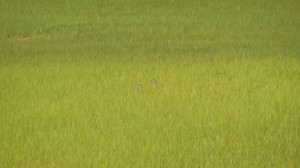 Just beyond them expanded a stunning salt marsh. Mr. Semmens eloquently explained the importance of this ecological beauty, describing it as, “the nursery of the ocean,” because its diverse and boutiful vegetation is consumed by crustaceans, insects, and fish, which are then predated upon by migratory birds and the larger fish species that are essential to New England’s ecosystems.”
Just beyond them expanded a stunning salt marsh. Mr. Semmens eloquently explained the importance of this ecological beauty, describing it as, “the nursery of the ocean,” because its diverse and boutiful vegetation is consumed by crustaceans, insects, and fish, which are then predated upon by migratory birds and the larger fish species that are essential to New England’s ecosystems.”
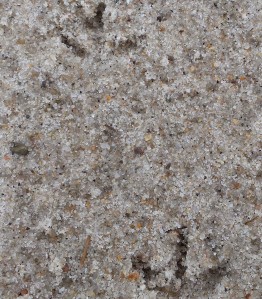 A retired family doctor and avid wildlife tracker, an “adult student” on the trip, Charlie, or as he prefers to be called, “Pothos”, and Mr. Semmens spotted some tracks in the sand as we approached the coast line. Naturally, they knew exactly which animal they belonged to. They analyzed the characteristics out-loud, asking questions and pointing out attributes from both the tracks and the landscape, in hopes that we students would solve the mystery. We didn’t, but we were able to deduce that is was a bird’s tracks – a beginning to our tracking mentorship!
A retired family doctor and avid wildlife tracker, an “adult student” on the trip, Charlie, or as he prefers to be called, “Pothos”, and Mr. Semmens spotted some tracks in the sand as we approached the coast line. Naturally, they knew exactly which animal they belonged to. They analyzed the characteristics out-loud, asking questions and pointing out attributes from both the tracks and the landscape, in hopes that we students would solve the mystery. We didn’t, but we were able to deduce that is was a bird’s tracks – a beginning to our tracking mentorship!
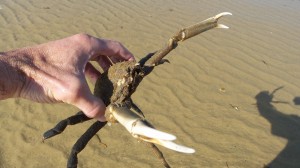
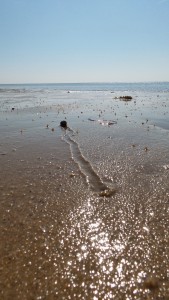 Our next plan was to see low tide and enjoy the sand bars.As if the Cape knew we were coming, it presented itself just as we’d hoped. We strolled along the shoreline, practicing our photography and collecting items of the sea for hours. Soon enough our stomachs were growling. It was time to head back to camp for supper.
Our next plan was to see low tide and enjoy the sand bars.As if the Cape knew we were coming, it presented itself just as we’d hoped. We strolled along the shoreline, practicing our photography and collecting items of the sea for hours. Soon enough our stomachs were growling. It was time to head back to camp for supper.
We collectively gathered supplies and prepared a gourmet meal of pasta, red sauce with vegetables, and hot dogs (for the carnivores). 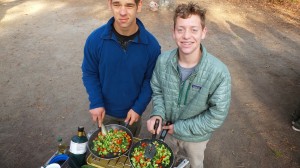 It was a relatively rushed ordeal, because we were trying to catch the sunset.
It was a relatively rushed ordeal, because we were trying to catch the sunset. 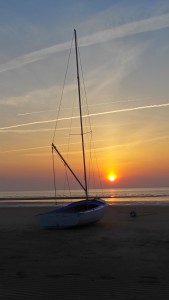 Excitedly and efficiently we sped to the shore for a second time that day. The sun was minutes from setting, but we had succeeded. The view was breathtaking. My camera didn’t leave my hands except to maintain my balance in the soft sand. I counted down the seconds until the sun passed the horizon. Silent serenity sunk over the group.
Excitedly and efficiently we sped to the shore for a second time that day. The sun was minutes from setting, but we had succeeded. The view was breathtaking. My camera didn’t leave my hands except to maintain my balance in the soft sand. I counted down the seconds until the sun passed the horizon. Silent serenity sunk over the group.
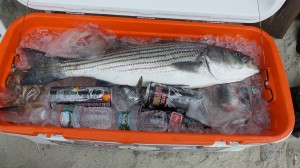 Our instructors decided that nothing could top the day off better than fresh seafood; and they were right. We cooked fish, and boiled about 50 clams, and one of our instructors from Bow, Mr. Duhaime, danced with excitement around the pot. They were delicious. Finally, after a crazy day of adventures, we prepared ourselves for bed. Anticipation for what tomorrow would bring simmered within all of us as we drifted off to sleep.
Our instructors decided that nothing could top the day off better than fresh seafood; and they were right. We cooked fish, and boiled about 50 clams, and one of our instructors from Bow, Mr. Duhaime, danced with excitement around the pot. They were delicious. Finally, after a crazy day of adventures, we prepared ourselves for bed. Anticipation for what tomorrow would bring simmered within all of us as we drifted off to sleep.
Zach Drotos
Cape Cod: Day 2
May 18, 2015
After a good night’s slumber, the crew rose to the symphony of birds and the smell of sizzling bacon. Like any carnivorous teenager, I quickly got out of bed to claim my share of the precious bacon. To my satisfaction there was more than enough bacon and eggs to feed a small army of famished teenagers! To top it all off, we had some cooked vegetables and juice. Stuffed to max capacity, we proceeded to pack our lunches before beginning our journey into the unknown.
Once loaded onto “The Twinkie” (the minibus), Mr. Semmens drove us to our first destination, the National Seashore Museum. Here we learned about the history of Cape Cod and its ever changing features via the documentary, “The Sands of Time”.
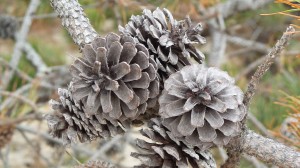 Our next stop was a mile long hike through the Cedar Swamp.
Our next stop was a mile long hike through the Cedar Swamp. 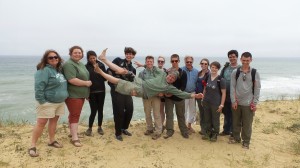 Once we completed the trek, nothing could stop us from stuffing our faces with our lunches. After everyone was satisfied, we headed down to the cliff face to take a group photo. With the ocean to our backs, we laughed as Mr. Semmens lept into the arms of the group, demonstrating the trust and camaraderie that we would build as a group, studying abroad together.
Once we completed the trek, nothing could stop us from stuffing our faces with our lunches. After everyone was satisfied, we headed down to the cliff face to take a group photo. With the ocean to our backs, we laughed as Mr. Semmens lept into the arms of the group, demonstrating the trust and camaraderie that we would build as a group, studying abroad together.
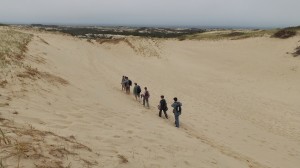 The day was still young and we soon made our way to the sand dunes. As we began walking up the steep mound of sand, it was apparent that the sands of Cape Cod had begun their feast on the forest. The view from the peak of the first dune was unlike any I have ever seen. For as far as the eye could see, there existed nothing but sand dunes!
The day was still young and we soon made our way to the sand dunes. As we began walking up the steep mound of sand, it was apparent that the sands of Cape Cod had begun their feast on the forest. The view from the peak of the first dune was unlike any I have ever seen. For as far as the eye could see, there existed nothing but sand dunes!
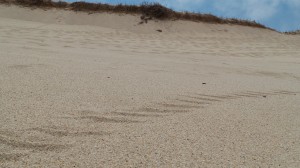
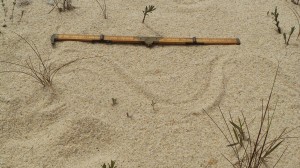 The distinct tracks of snakes with different types of movement on the dunes, sidewinding and undulatory, were like that of a brushstroke on a canvas as they pushed their legless bodies over the sands.
The distinct tracks of snakes with different types of movement on the dunes, sidewinding and undulatory, were like that of a brushstroke on a canvas as they pushed their legless bodies over the sands.
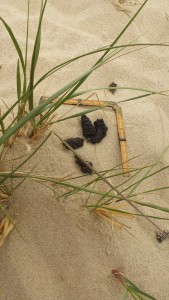 On our way back to “The Twinkie”, the group discovered a mound of fecal matter on the crest of one of the dunes. Through extensive analysis of size, content, placement, and a review of possible animals known in the area, the group came to a conclusion, but we were not certain – and we learned that sometimes that’s the way things are with tracking – there isn’t enough evidence to make a firm decision.
On our way back to “The Twinkie”, the group discovered a mound of fecal matter on the crest of one of the dunes. Through extensive analysis of size, content, placement, and a review of possible animals known in the area, the group came to a conclusion, but we were not certain – and we learned that sometimes that’s the way things are with tracking – there isn’t enough evidence to make a firm decision.
Famished, yet again, we ventured to Cooke’s Seafood restaurant for dinner. Even though we had more than enough food to eat, we were quick to make room for some ice cream for dessert. The ice cream place we went to had at least thirty different flavors to choose from, all of which were homemade. Once everyone got their fair share of the frozen treat, we headed back to base camp.
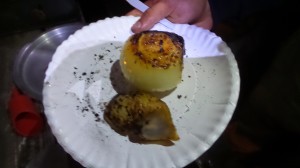 Once at the camp, we got a fire going and made room for yet more food! We ate s’mores and cooked several onions and hot dogs in the fire. Stuffed to max capacity (this time for real) the group did not need much encouragement to hit the hay. Our physically spent bodies would soon get some much needed sleep.
Once at the camp, we got a fire going and made room for yet more food! We ate s’mores and cooked several onions and hot dogs in the fire. Stuffed to max capacity (this time for real) the group did not need much encouragement to hit the hay. Our physically spent bodies would soon get some much needed sleep.
Edited by Kersey Lawrence
Photos by Marcel Duhaime
Stay tuned, the next entry will be from Africa!!!
